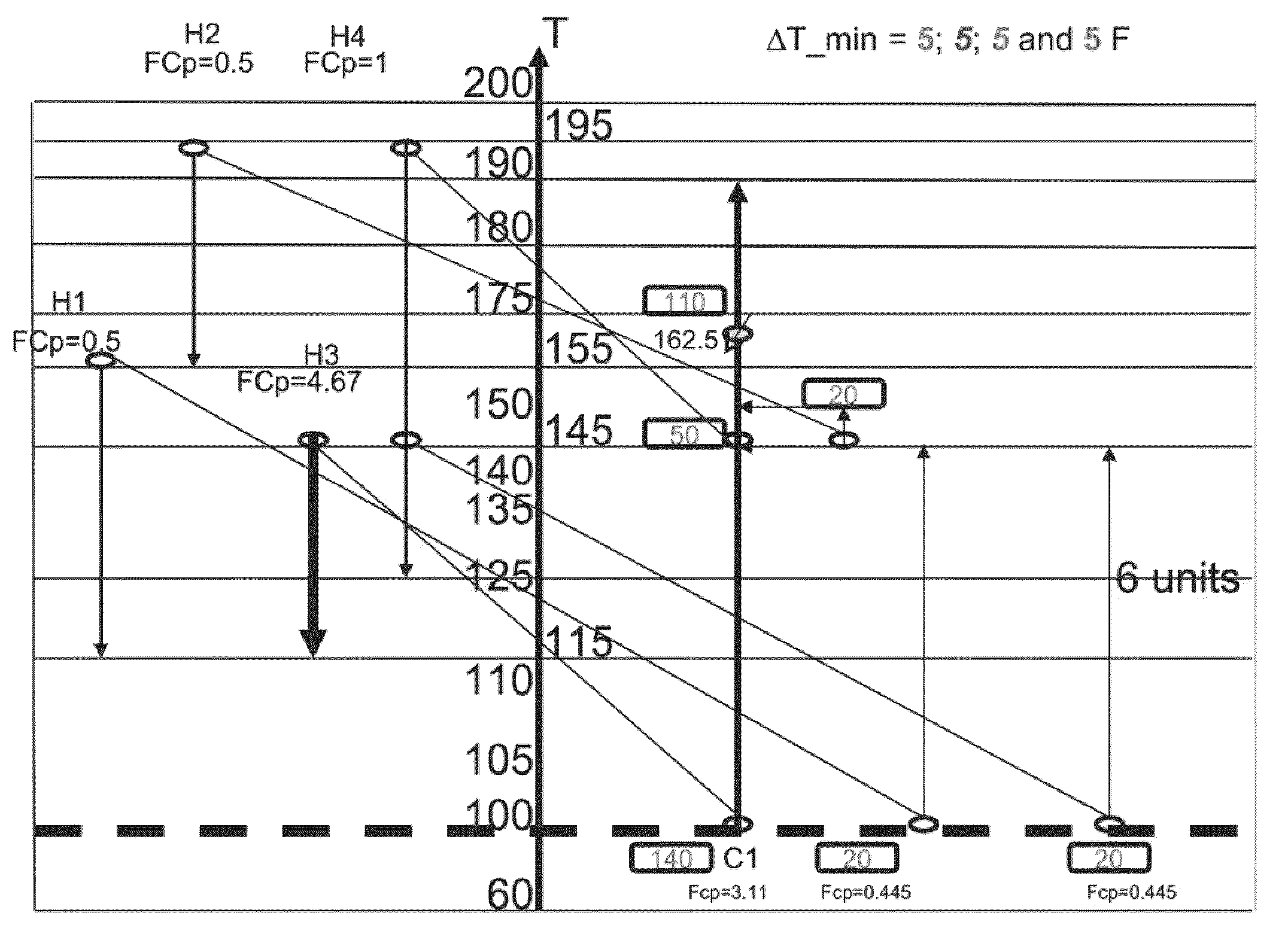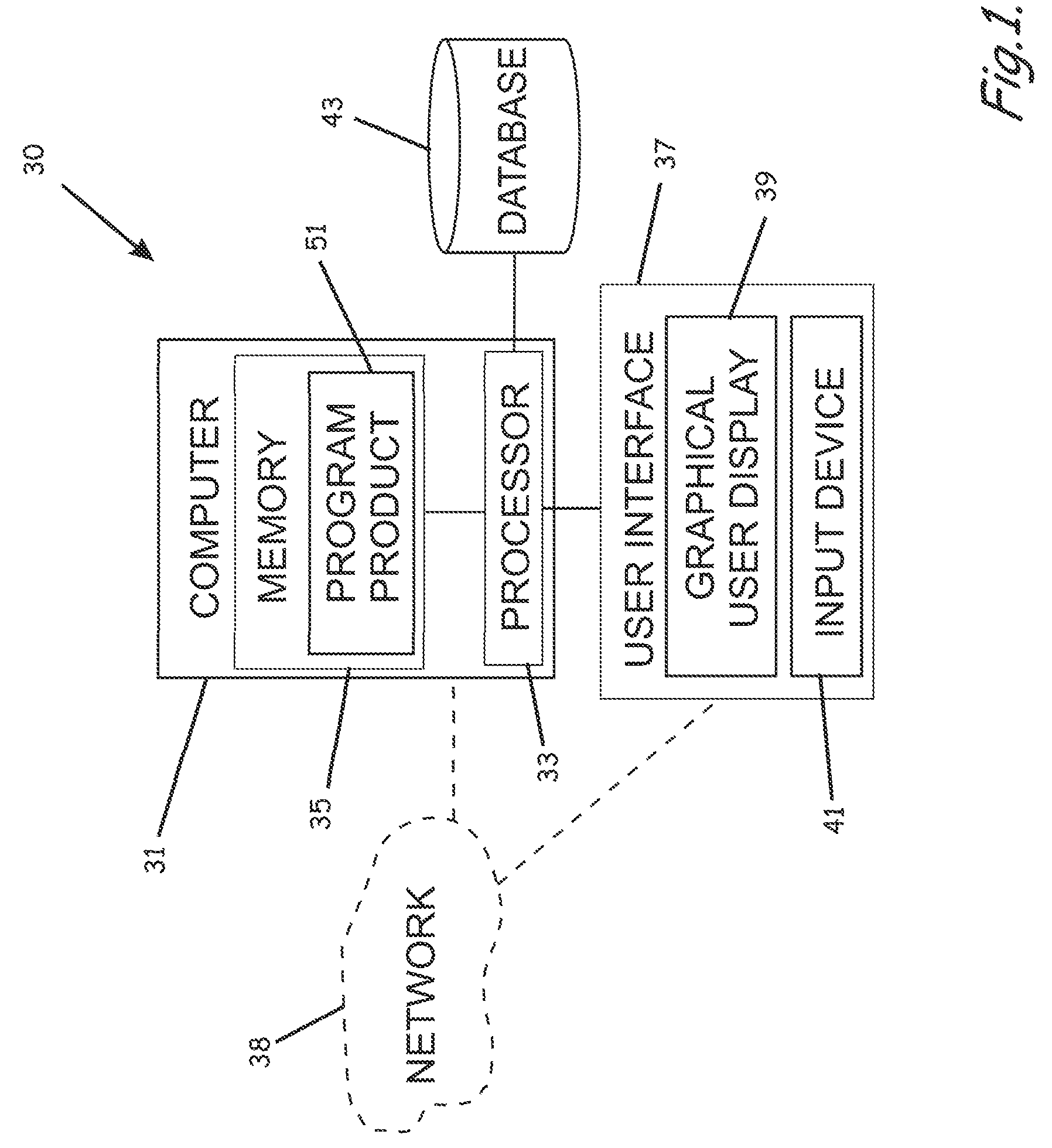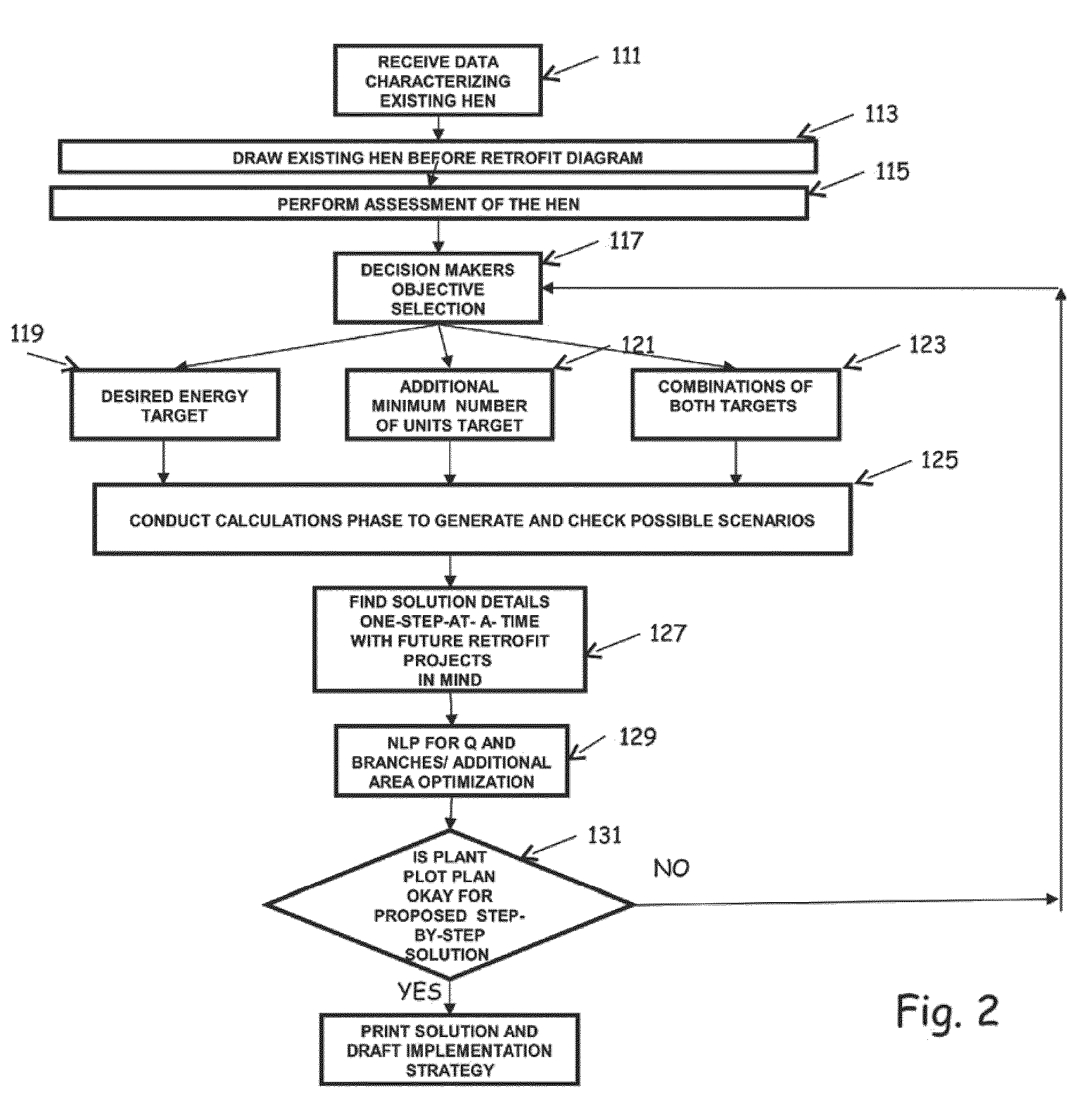Using a different starting point, however, will likely result in a completely different
network structure retrofit solution.
As such, if one starts with the wrong ΔT_min, the wrong structure will be obtained, and evolutionary
heuristics and optimization techniques (NLP) will not lead to the best results since radical moves / changes from one structure to another are not feasible or possible.
That is, if the designer cannot accept the entire
solution structure for one reason or another (e.g., capital needed and / or time for implementation, affect on other process units, etc.) the
package will have to be rejected.
This can be troublesome as the targets defined for area and investment costs are not rigorous and very crude.
The use of pinch technology rules to find topological modifications in the existing HENs to overcome the so called network pinch, however, is not rigorous since it is based upon the assumption that the network pinch and the process pinch are not going to change its location due to the taken topological modification.
As the assumption is not correct, topological modifications can have counter effects on each other to the extent that they may completely negate the possibility of doing future retrofit projects.
That is, it may become impossible to employ a certain retrofit project due its counter effect on the previous projects, and so on, making the retrofit projects in sustainable.
For example, if the current HEN retrofit process is conducted using pinch technology concept including the evolutionary network pinch method, and then if in at least one time at any future network retrofit process a different pinch
point location arises, e.g., due to process parametric and / or structural modifications, and if the different pinch
point location indicates a need for a lesser minimum number of units than the one used in previous HEN retrofit project, the result may be a
wasting of some of the HE units already added in the previous HEN retrofit.
Such use, however, is crude, based upon
heuristics, and is not rigorous (repeatably accurate).
Although, as noted previously, most
commercial software are currently using mathematical
programming techniques to complement other methodologies, pure mathematical
programming techniques have been less well received, particularly in the industry
community.
For example, in the most widely used pinch technology method and its modifications, the method is non-systematic and involves
heuristics that produce solutions whose quality depends entirely on the designer experience in applying such heuristics—i.e., the global ΔT_min should be used in determining the location of the pinch for an assumed best global ΔT_min.
Accordingly, the inventor has recognized that such methodology is not systematic, requiring iteration, and that pinch method initialization using an assumed best global ΔT_min is ad hoc, and thus, such methodology could not be used as a standard method for
plant-lifetime retrofit.
Accordingly, such methodology could also not be used as a standard method for
plant-lifetime retrofit.
The mathematical
programming-based methods also have significant disadvantages.
For example, the mathematical programming-based methods provide little or almost no scope for user interaction.
Although it is currently possible to solve larger problems than before utilizing such methods, the current capacity is still not to the scale needed in many industrial applications.
As such, the inventor has recognized that including all possible
process design modifications, different types and configurations of HE units and so on in the
superstructure is impractical and will make the problem harder, intractable and impossible to solve.
The required information / data, however, is normally not available during the conceptual phase of the retrofit project, especially in a typical de-centralized
engineering environment where projects
cost control depends entirely on rigorous cost calculations, which typically, if not always, are made after the retrofit project basic
engineering, and which are carried out at different departments, at least in most of the companies.
Further, it would be neither practical nor logical to assume with
high fidelity all possible retrofit solutions that could potentially be implemented for a given plot plan of a facility or to rigorously develop cost correlations to each before running the mathematical program—especially when there is always more than one option to carry out a designated retrofit modification.
As such, the inventor has recognized that mathematical programming techniques will often lead to designs which include heat exchange across the pinch, which would be almost impossible to correct in future retrofits to recover extra heat.
 Login to View More
Login to View More  Login to View More
Login to View More 


